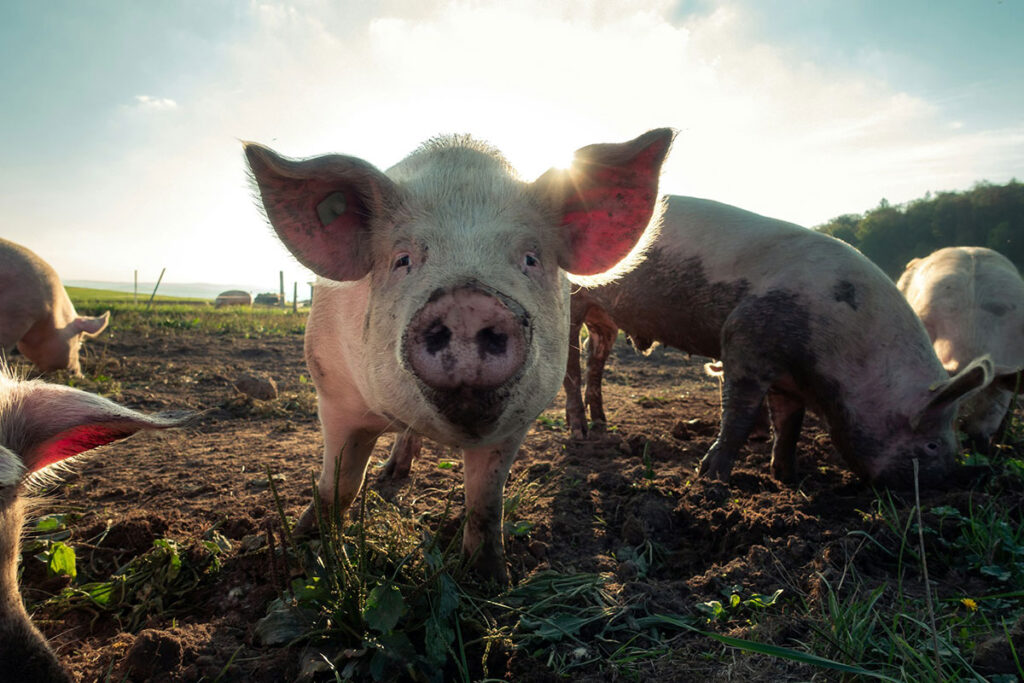African swine fever (ASF) remains one of the most pressing transboundary animal diseases, threatening global pork supply chains and the economic stability of livestock industries. With continued outbreaks across Asia, Europe, and the Caribbean, the probability of ASF reaching the United States is high. A new study by researchers from North Carolina State University, the USDA Animal and Plant Health Inspection Service, and the University of Minnesota provides a rigorous modeling analysis of what it would take to eliminate ASF from the southeastern U.S. swine industry within one year of its introduction.
A Model Grounded in Reality: PigSpread-ASF
The researchers employed an updated version of their spatially explicit, stochastic transmission model—PigSpread-ASF—to simulate the spread and control of ASF at the farm level across a network of nearly 2,000 commercial swine farms, predominantly in North Carolina. The model factored in swine and vehicle movements, indirect contact via people and equipment, and local environmental spread. It also integrated the most recent USDA ASF National Response Plan guidelines, known as “The Red Book.”
Key interventions modeled included:
- Quarantine and depopulation of detected farms
- 72-hour movement standstill for all pig and vehicle traffic
- Contact tracing for direct and indirect farm exposures
- Control and surveillance zones with diagnostic testing and movement restrictions
Baseline Results Under Current Strategy: Too Little, Too Late
Using existing USDA protocols, the model found that only 65.1% of ASF outbreak scenarios would be successfully eliminated within a 12-month period in the southeastern U.S. swine population. This is far from reassuring, given the virus’s resilience and the rapid transmission dynamics in dense commercial production systems. As a result, the authors explored 11 enhanced control scenarios to improve eradication prospects.
What It Takes to Eliminate ASF Within 12 Months
To achieve ASF elimination within 12 months across all modeled scenarios, the study identified the following intensified measures as necessary:
- Buffer Zone Radius: Increased from 2 km to 5 km (3.11 miles)
- Surveillance Zone Radius: Maintained for 60 days
- Contact Tracing Duration: 60 days, with a 30-day quarantine for contact farms
- Initial Standstill Period: 30 days of halted animal and vehicle movements
- No Repopulation: Farms cleared of infection must remain empty until epidemic resolution
- Rapid Detection: Faster baseline detection to trigger control response earlier
These more aggressive interventions resulted in far higher probabilities of ASF elimination in a year or less—providing a vital roadmap for contingency planning.
The Price of Speed: Scenarios for Faster Elimination
When the model simulated more ambitious timelines—eliminating ASF within three, six, or nine months—control requirements became significantly more severe. For example, eliminating ASF in just three months required:
- Infected, buffer, and surveillance zones expanded to 20 km each (12.43 miles)
- Control zones maintained for 90 days
- 90-day standstill and 90-day traceback and quarantine for contacts
These scenarios offer insight into the magnitude of resources and logistical coordination that would be necessary for ultra-rapid eradication efforts.
Balancing Eradication with Feasibility
While the model demonstrates that intensified response strategies could succeed, it also raises important considerations about resource limitations and business continuity. Expanding control zones and extending standstills may impact trade, workforce logistics, and the economic viability of producers—especially if repopulation is delayed for extended periods. Additionally, assumptions in the model, such as the effectiveness of vehicle decontamination or the completeness of movement data, underscore the need for real-time, high-quality information systems during an outbreak.
Implications for Biosecurity Policy and Planning
This study provides a decision-support framework for federal and state animal health authorities, offering quantitative targets for zone sizes, quarantine lengths, and detection speed. As no commercial ASF vaccine is currently approved, early detection and aggressive containment remain the cornerstone of outbreak response. The findings emphasize that merely following existing plans may not be enough—and that contingency strategies must account for more aggressive and resource-intensive interventions.
The study underscores the urgent need for preparedness in the face of a potential ASF introduction into the United States. While elimination within 12 months is achievable, it will require a significant escalation in response strategies and coordination. Policymakers and industry stakeholders must weigh the costs of early and intensive intervention against the far greater economic and ecological risks of prolonged ASF circulation.
Sykes, J., Machado, G., Galvis, J. et al. Identifying control strategies to eliminate African swine fever in the United States swine industry in under 12 months. Preventive Veterinary Medicine, 2025. https://www.sciencedirect.com/science/article/abs/pii/S0167587725001837


